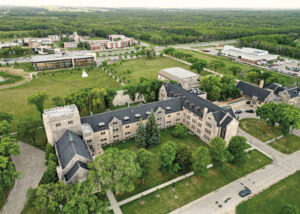Reading words written nearly 500 years ago and translated nearly 70 years ago takes some effort, especially when the message is that death precedes resurrection. We trust the Spirit will reveal something new in the old.
Awake thou that sleepest, and arise from the dead, and Christ shall give thee light.
The Scriptures teach two resurrections, namely, a bodily resurrection from the dead at the last day, and a spiritual resurrection from sin and death to a new life and a change of heart.
That a person should mortify and bury the body of sin and rise again to a life of righteousness in God is plainly taught in all of the Scriptures.
Paul admonishes saying, Put off concerning the former conversation the old person which is corrupt according to the deceitful lusts, and be renewed in the spirit of your mind, that ye put on the new person, which after God is created in righteousness and true holiness. . . .
[T]here can be no resurrection from sin and death unless this body of sin be first destroyed and buried and have sensibly endured pain and the burden of sin, that is, penitence and remorse on account of sin, as is evident from the Scriptures. David says, O Lord, rebuke me not in thy wrath . . . . [f]or mine iniquities are gone over my head. . . .
Paul says, Ye were made sorry after a godly manner, to repentance, for godly sorrow worketh repentance to salvation. . . .
Behold, so we must die with Christ unto sin, if we would be made alive with Him. For none can rejoice with Christ unless they first suffer with Him. For this is a sure word, says Paul, If we be dead with him, we shall also live with him; if we suffer, we shall also reign with him.
This resurrection includes the new creature, the spiritual birth and sanctification, without which no one shall see the Lord. This Paul testifies in a word saying . . . If anyone be in Christ, they are a new creature; old things are passed away; behold, all things are become new. . . .
We must spend the remainder of our days not after the lusts of men, but according to the will of God, so that we may say with Paul, I am crucified with Christ; nevertheless I live; yet not I, but Christ liveth in me; and the life which I now live in the flesh I live by the faith of the Son of God who loved me and gave himself for me. . . .
For Christ has expressly portrayed Himself in His Word, that is, as to the nature which He would have us understand, grasp and follow and emulate . . . . So Christ is everywhere represented to us as humble, meek, merciful, just, holy, wise, spiritual, long-suffering, patient, peaceable, lovely, obedient, and good. . . .
All regenerate children of God are thus minded and affected, for they take after Him who has begotten them. . . . Then when they have conformed to the image of God and have been born of God and also abide in God, they do not sin, for the seed of God remains in them; and they have overcome the world. They are crucified to the world, and the world unto them; they have mortified their flesh and have buried their sinful body with Christ in baptism, with its lusts and desires, and now no longer serve sin unto unrighteousness, but much more righteousness unto sanctification. . . .
And if they receive a wound, surprised by their enemies, their souls remain uninjured and the wound is not unto death, for they have the anointing of God. They have the true Samaritan and the true physician with them, who can bind up and heal their wounds, for He has compassion over our weakness and frailty. Through His stripes and wounds we are healed.
So also all those who find in examining themselves that they are not after their first birth according to the flesh regenerated and renewed in mind, understanding, spirit, and disposition, but are still altogether carnal, earthly, worldly and devilishly minded . . . let these humble themselves before God with Jeremiah saying: Let us examine and prove our ways, and let us turn unto the Lord; let us lift our hands and hearts to God in heaven and say, We have sinned before heaven and in thy sight. . . . Let them humbly entreat Him for His Spirit. . . . Let them continue in prayer and in their desires to God till they are clothed with the power of the Spirit from on high, remade and renewed in the spirit of their mind, and in astonishment say: This is the change wrought by the right hand of God, the most High.
May the God of all grace who will in the last resurrection gather the elect into His eternal kingdom grant us such hearts, minds, and dispositions that we, through true faith, and denial of self, may so deny and renounce ourselves that we may have part in the first resurrection of which we have spoken. . . . This resurrection consists solely in dying unto, mortifying and burying the sinful body through putting off and mortifying the old life and in being raised and renewed unto a new and pious conversation. Amen.
Adapted from The Complete Writings of Menno Simons, copyright © 1974, pages 53-61. Adapted and used with permission of Herald Press. All rights reserved. To purchase, visit CommonWord.ca or HeraldPress.com.
For discussion
1. What do you think Menno Simons means when he says, “[t]here can be no resurrection from sin and death unless this body of sin be first destroyed and buried”? What needs to be buried? What is the role of suffering in this?
2. Our lives are saturated with advertising that appeals to our carnal, fleshly desires for excess. What might it mean to mortify and bury the sinful body in this context?
3. Have Christians tended to over-emphasize spiritual bodies over physical bodies?
4. What has been your experience of “spiritual birth” or becoming a “new creature”?
5. What are the resurrections for which you praise God this Easter season?
—CM Staff








Leave a Reply
You must be logged in to post a comment.